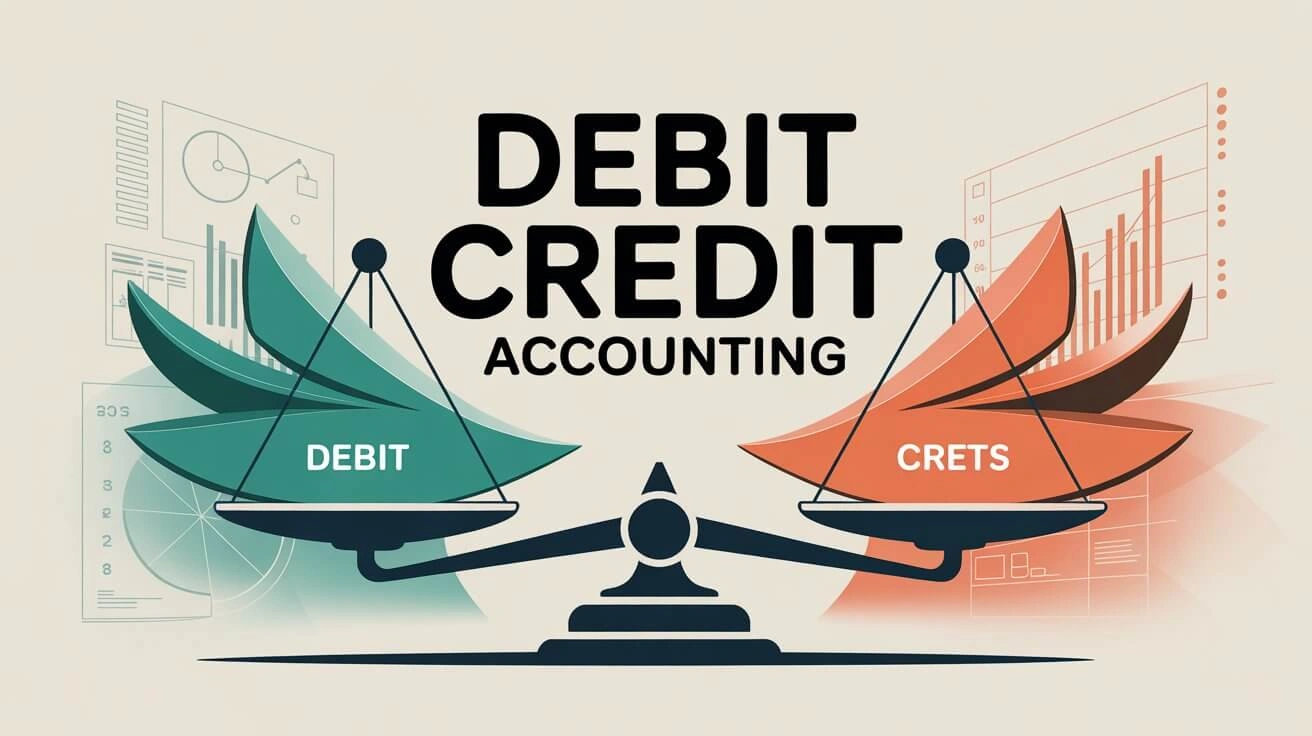If you’ve ever tried to track business finances, balance your books, or read a financial report, you’ve likely run into the terms debit and credit. These two foundational elements are central to double-entry bookkeeping, the accounting system used by nearly every business.
This article unpacks the essentials of debit credit accounting—what these terms mean, how they work together, and why they’re crucial to accurate financial reporting.

Content
What is a Debit in Accounting?
In accounting, a debit refers to an entry that increases asset or expense accounts and decreases liability, revenue, or equity accounts. Think of a debit as something coming into your business.
Debit Examples:
- You buy a laptop for your business using cash:
→ Debit Equipment, Credit Cash - You pay a vendor for services:
→ Debit Service Expense, Credit Bank
Debits are recorded on the left side of a T-account and typically reflect value the business receives.
What is a Credit in Accounting?
A credit is the opposite of a debit. It increases liability, equity, or revenue accounts and decreases assets or expenses. In essence, it shows value that is leaving the business or obligations being created.
Credit Examples:
- You receive payment for services rendered:
→ Debit Bank, Credit Revenue - You borrow money from a bank:
→ Debit Cash, Credit Loan Payable
Credits are entered on the right side of the T-account and represent a source of funding or reduction in owned value.
Debit Credit Accounting Rules
Understanding the rules of debit and credit accounting helps ensure that every financial transaction is recorded properly and your books remain balanced.
Core Principle: The Accounting Equation
Assets = Liabilities + Equity
In every transaction, the total debits must equal total credits.
Chart: How Debits and Credits Affect Account Types
| Account Type | Debit Effect | Credit Effect |
| Assets | Increases | Decreases |
| Liabilities | Decreases | Increases |
| Equity | Decreases | Increases |
| Revenue | Decreases | Increases |
| Expenses | Increases | Decreases |
These debit credit accounting rules serve as the foundation of all double-entry bookkeeping systems.
Real-World Transactions in Debit Credit Accounting
Let’s take a closer look at how debit credit accounting applies to typical business scenarios. Each transaction affects at least two accounts—this is the dual nature of double-entry bookkeeping.
Example 1: Buying Inventory
- Debit Inventory (Asset)
- Credit Accounts Payable (Liability)
You increase inventory and owe a vendor.
Example 2: Making a Sale
- Debit Cash or Accounts Receivable
- Credit Sales Revenue (Revenue)
You receive payment or create a receivable for selling goods.
Example 3: Paying Employees
- Debit Salaries Expense (Expense)
- Credit Cash (Asset)
You incur a business expense and pay cash.
Example 4: Owner Contribution
- Debit Bank (Asset)
- Credit Owner’s Capital (Equity)
Funds added to the business increase both assets and equity.
Example 5: Taking Out a Loan
- Debit Cash (Asset)
- Credit Notes Payable (Liability)
You borrow money and take on a debt obligation.
These examples show how debit and credit entries work together to capture the full picture of any transaction.
Why Is Debit Credit Accounting Important?
Properly applying debit and credit accounting principles is essential for:
Accurate Financial Reporting
Correct entries help produce reliable income statements, balance sheets, and cash flow statements.
Decision-Making
Understanding how transactions affect accounts enables better budgeting, forecasting, and strategic planning.
Tax Compliance
Well-kept books make tax filing easier and reduce the risk of errors or penalties.
Business Transparency
Lenders, investors, and partners expect clean and understandable records.
Common Mistakes to Avoid in Debit Credit Accounting
Even experienced bookkeepers can make errors. Here are a few pitfalls to watch out for:
- Reversing entries (e.g., debiting liabilities instead of crediting them)
- Ignoring transaction context (e.g., recording only part of a two-part entry)
- Not updating ledgers consistently
- Mixing up revenue and capital contributions
Using accounting software can help automate correct entries and minimize these mistakes.
Tools That Simplify Debit Credit Accounting
While understanding the theory is important, many tools can make debit credit accounting more accessible:
- T-Accounts: Help visualize which side an entry should go on.
- Accounting Software: Automates entries, reduces human error (e.g., QuickBooks, Xero, Wave).
- Spreadsheets: For small businesses or personal accounting, Excel or Google Sheets with pre-set formulas can work well.
Final Thoughts on Debit Credit Accounting
Debit credit accounting may sound complex at first, but once you grasp how it fits into the larger picture of business finance, it becomes much easier to manage. The key is to remember the accounting equation and the rules for how each account type behaves under debits and credits.
This guide explains core principles in simple terms, helping you track transactions accurately. For businesses seeking visibility, advertise with us to reach readers looking to strengthen their financial knowledge and skills.
Every transaction—whether it’s a sale, a purchase, or a loan—can be understood through the lens of debits and credits. As you gain more hands-on experience, you’ll find these concepts become second nature.
FAQs
What is the difference between debit and credit in accounting?
A debit increases assets or expenses, while a credit increases liabilities, revenue, or equity.
Why is debit credit accounting important for businesses?
It ensures accurate financial records, supports compliance, and helps track business performance for better decision-making.

Johnny is a finance blogger who has been blogging for years. He’s familiar with everything that goes into it, and loves to share his knowledge with others.













